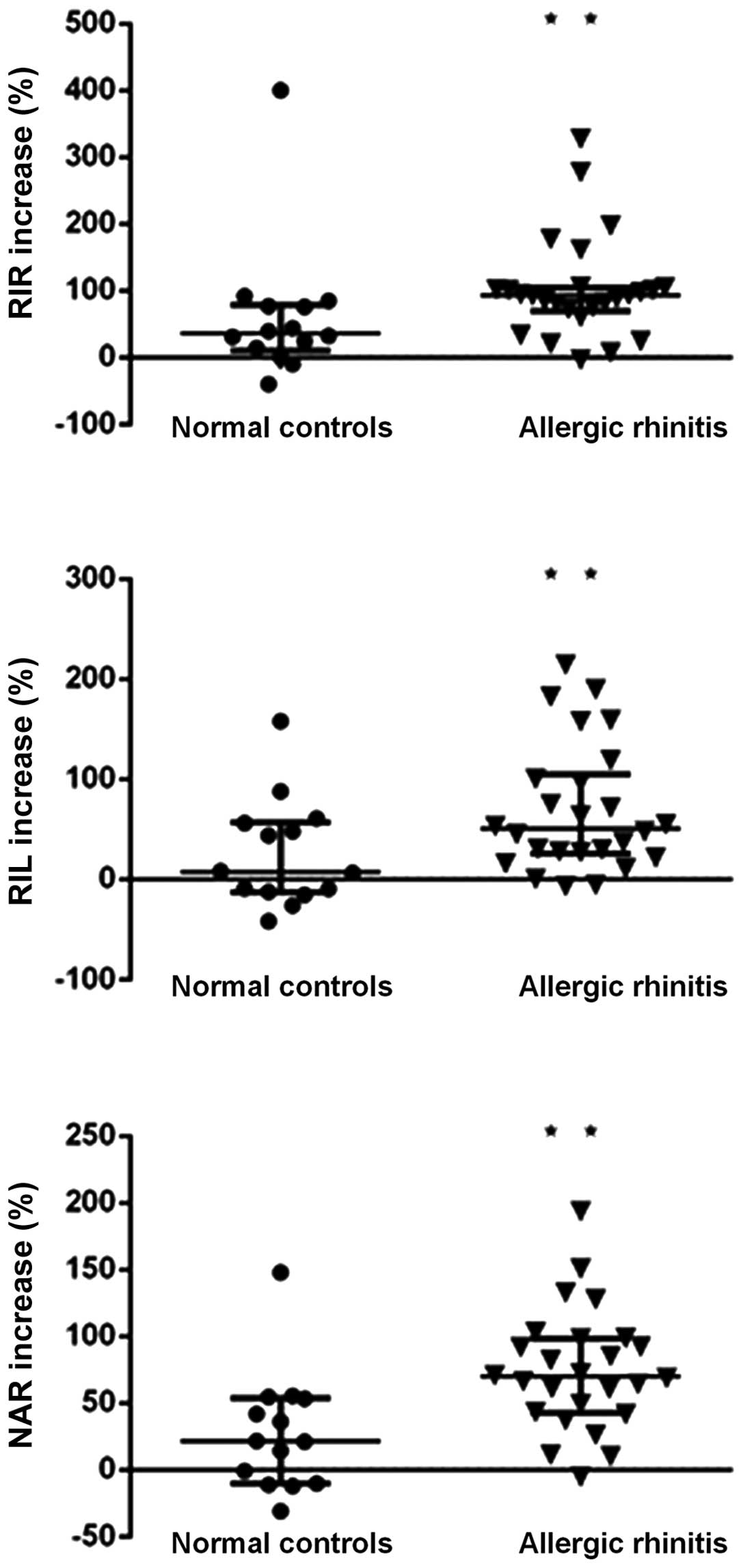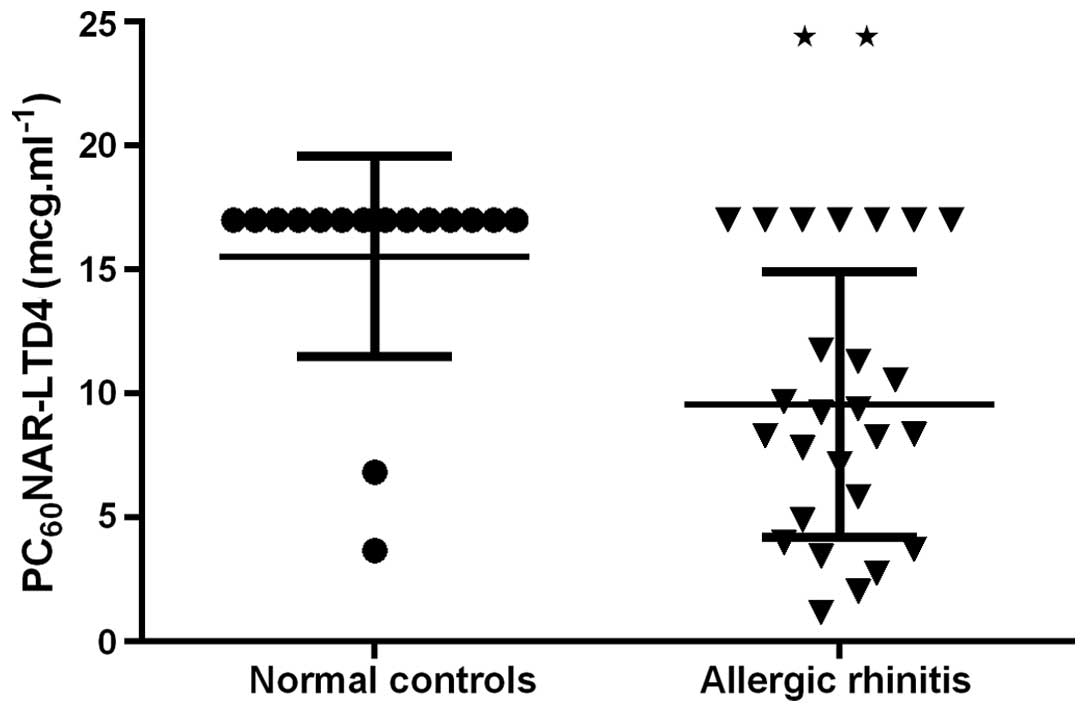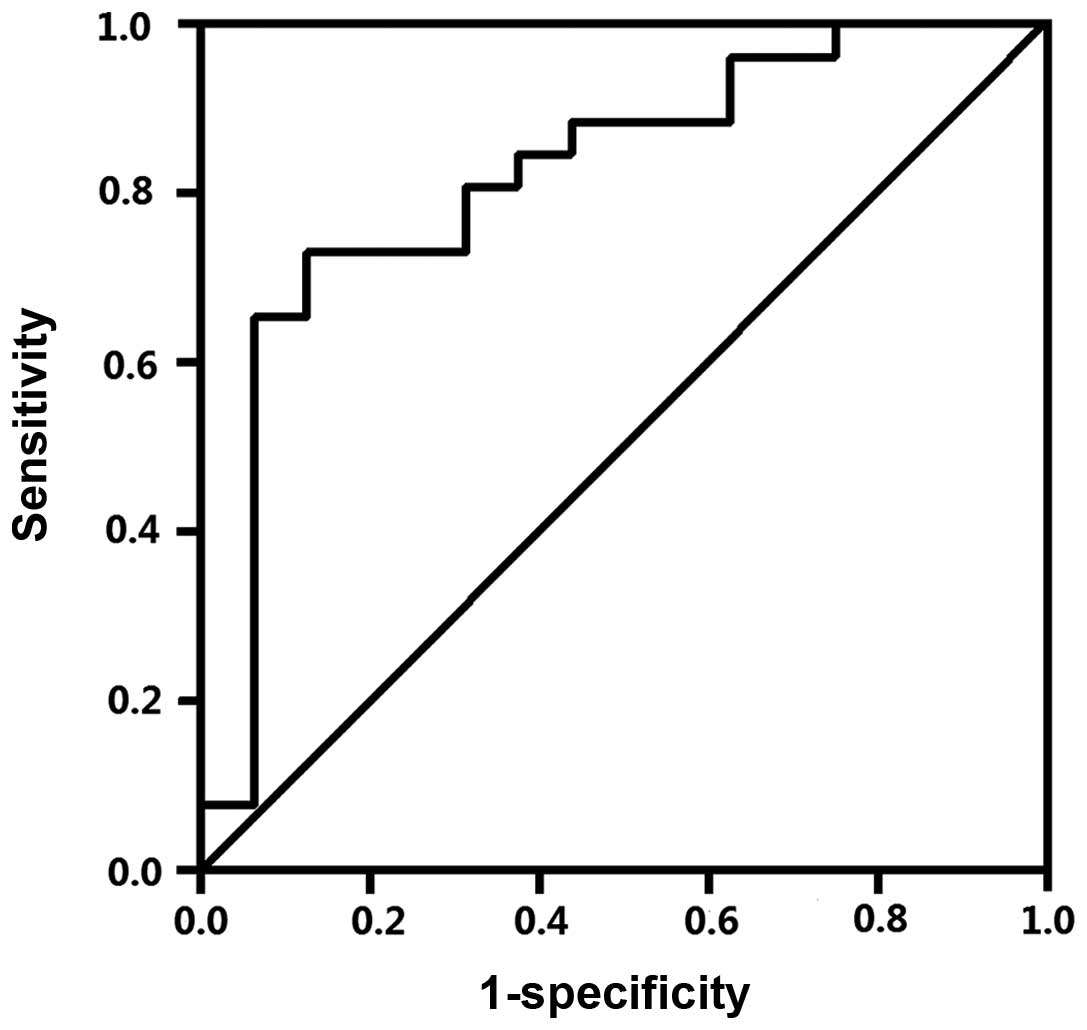|
1
|
Bisgaard H, Robinson C, Rømeling F, Mygind
N, Church M and Holgate ST: Leukotriene C4 and histamine in early
allergic reaction in the nose. Allergy. 43:219–227. 1988.
View Article : Google Scholar : PubMed/NCBI
|
|
2
|
Kunitomo M and Otsuka H: Comparison of
antigen-induced leukotriene and histamine release from nasal
scrapings in allergic rhinitis. Rhinology. 43:199–204.
2005.PubMed/NCBI
|
|
3
|
Busse WW: The role of leukotrienes in
asthma and allergic rhinitis. Clin Exp Allergy. 26:868–879. 1996.
View Article : Google Scholar : PubMed/NCBI
|
|
4
|
Howarth PH, Salagean M and Dokic D:
Allergic rhinitis: Not purely a histamine-related disease. Allergy.
55(Suppl 64): S7–S16. 2000. View Article : Google Scholar
|
|
5
|
Price DB, Swern A, Tozzi CA, Philip G and
Polos P: Effect of montelukast on lung function in asthma patients
with allergic rhinitis: Analysis from the COMPACT trial. Allergy.
61:737–742. 2006. View Article : Google Scholar : PubMed/NCBI
|
|
6
|
Patel P, Philip G, Yang W, Call R, Horak
F, LaForce C, Gilles L, Garrett GC, Dass SB, Knorr BA and Reiss TF:
Randomized, double-blind, placebo-controlled study of montelukast
for treating perennial allergic rhinitis. Ann Allergy Asthma
Immunol. 95:551–557. 2005. View Article : Google Scholar : PubMed/NCBI
|
|
7
|
Philip G, Williams-Herman D, Patel P,
Weinstein SF, Alon A, Gilles L, Tozzi CA, Dass SB and Reiss TF:
Efficacy of montelukast for treating perennial allergic rhinitis.
Allergy Asthma Proc. 28:296–304. 2007. View Article : Google Scholar : PubMed/NCBI
|
|
8
|
Pinar E, Eryigit O, Oncel S, Calli C,
Yilmaz O and Yuksel H: Efficacy of nasal corticosteroids alone or
combined with antihistamines or montelukast in treatment of
allergic rhinitis. Auris Nasus Larynx. 35:61–66. 2008. View Article : Google Scholar : PubMed/NCBI
|
|
9
|
Nayak A and Langdon RB: Montelukast in the
treatment of allergic rhinitis: An evidence-based review. Drugs.
67:887–901. 2007. View Article : Google Scholar : PubMed/NCBI
|
|
10
|
Virchow JC and Bachert C: Efficacy and
safety of montelukast in adults with asthma and allergic rhinitis.
Respir Med. 100:1952–1959. 2006. View Article : Google Scholar : PubMed/NCBI
|
|
11
|
Drazen JM: Leukotrienes as mediators of
airway obstruction. Am J Respir Crit Care Med. 158:S193–S200. 1998.
View Article : Google Scholar : PubMed/NCBI
|
|
12
|
Lee TH, Woszczek G and Farooque SP:
Leukotriene E4: Perspective on the forgotten mediator. J Allergy
Clin Immunol. 124:417–421. 2009. View Article : Google Scholar : PubMed/NCBI
|
|
13
|
Bisgaard H, Olsson P and Bende M: Effect
of leukotriene D4 on nasal mucosal blood flow, nasal airway
resistance and nasal secretion in humans. Clin Allergy. 16:289–297.
1986. View Article : Google Scholar : PubMed/NCBI
|
|
14
|
Miadonna A, Tedeschi A, Leggieri E, Lorini
M, Folco G, Sala A, Qualizza R, Froldi M and Zanussi C: Behavior
and clinical relevance of histamine and leukotrienes C4 and B4 in
grass pollen-induced rhinitis. Am Rev Respir Dis. 136:357–362.
1987. View Article : Google Scholar : PubMed/NCBI
|
|
15
|
Guan WJ, Zheng JP, Gao Y, Jiang CY, An JY,
Yu XX and Liu WT: Leukotriene D4 bronchial provocation test:
Methodology and diagnostic value. Curr Med Res Opin. 28:797–803.
2012. View Article : Google Scholar : PubMed/NCBI
|
|
16
|
Guan WJ, Zheng JP, Gao Y, Jiang C, Xie Y,
An J, Yu X, Liu W and Zhong N: Leukotriene D4 and methacholine
bronchial provocation test for identifying
leukotriene-responsiveness subtypes. J Allergy Clin Immunol.
131:332–338. 2013. View Article : Google Scholar : PubMed/NCBI
|
|
17
|
Bousquet J, Khaltaev N, Cruz AA, Denburg
J, Fokkens WJ, Togias A, Zuberbier T, Baena-Cagnani CE, Canonica
GW, van Weel C, et al: Allergic rhinitis and its impact on asthma
(ARIA) 2008 Update (in collaboration with the World Health
Organization, GA(2)LEN and AllerGen). Allergy. 63(Suppl 86): 8–160.
2008. View Article : Google Scholar : PubMed/NCBI
|
|
18
|
Riechelmann H, Bachert C, Goldschmidt O,
Hauswald B, Klimek L, Schlenter WW, Tasman AJ and Wagenmann M:
German Society for Allergology and Clinical Immunology (ENT
Section); Working Team for Clinical Immunology: Application of the
nasal provocation test on diseases of the upper airways. Position
paper of the German society for allergology and clinical immunology
(ENT Section) in cooperation with the working Team for Clinical
Immunology. Laryngorhinootologie. 82:183–188. 2003.(In German).
View Article : Google Scholar : PubMed/NCBI
|
|
19
|
Numata T, Hanazawa T, Konno A, Terada N,
Yamakoshi T and Nagata H: Comparative role of peptide leukotrienes
and histamine in the development of nasal mucosal swelling in nasal
allergy. Ann Otol Rhinol Laryngol. 108:467–473. 1999. View Article : Google Scholar : PubMed/NCBI
|
|
20
|
Miadonna A, Tedeschi A, Leggieri E, Lorini
M, Folco G, Sala A, Qualizza R, Froldi M and Zanussi C: Behavior
and clinical relevance of histamine and leukotrienes C4 and B4 in
grass pollen-induced rhinitis. Am Rev Respir Dis. 136:357–362.
1987. View Article : Google Scholar : PubMed/NCBI
|
|
21
|
Howarth PH: Mediators of nasal blockage in
allergic rhinitis. Allergy. 52(Suppl 40): S12–S18. 1997. View Article : Google Scholar
|
|
22
|
Serrano CD, Valero A, Bartra J,
Roca-Ferrer J, Muñoz-Cano R, Sánchez-López J, Mullol J and Picado
C: Nasal and bronchial inflammation after nasal allergen challenge:
Assessment using noninvasive methods. J Investig Allergol Clin
Immunol. 22:351–356. 2012.PubMed/NCBI
|
|
23
|
Baek HS, Cho J, Kim JH, Oh JW and Lee HB:
Ratio of leukotriene e(4) to exhaled nitric oxide and the
therapeutic response in children with exercise-induced
bronchoconstriction. Allergy Asthma Immunol Res. 5:26–33. 2013.
View Article : Google Scholar : PubMed/NCBI
|

















